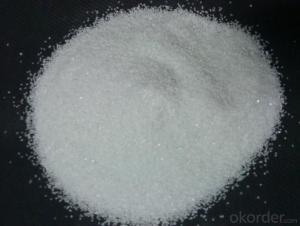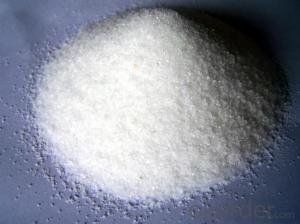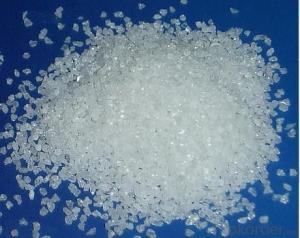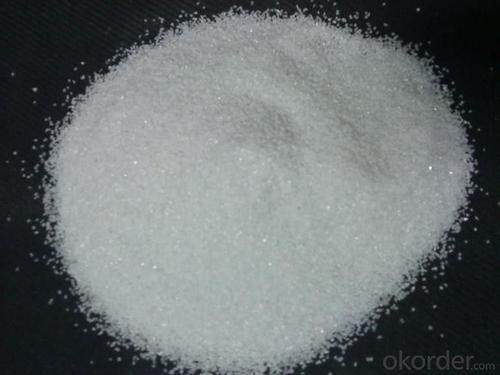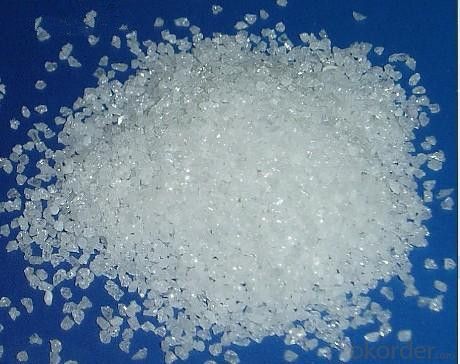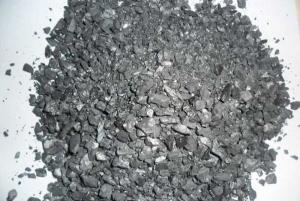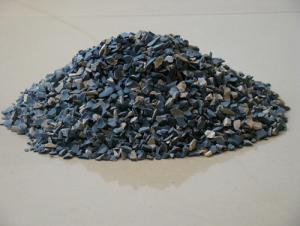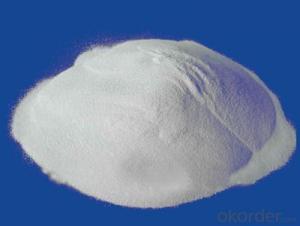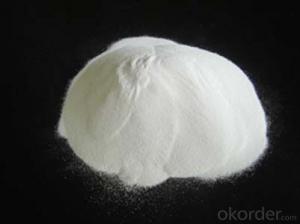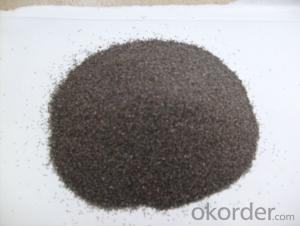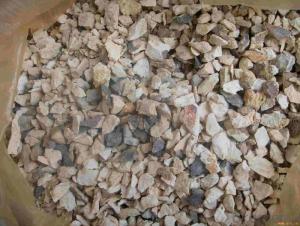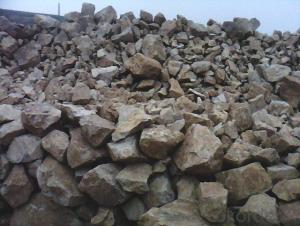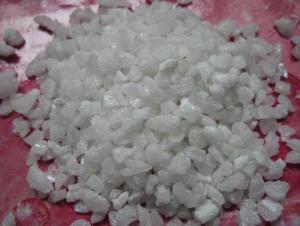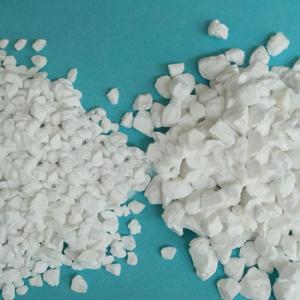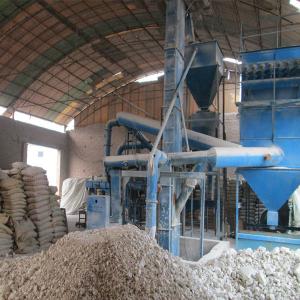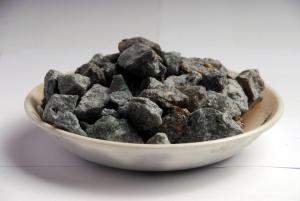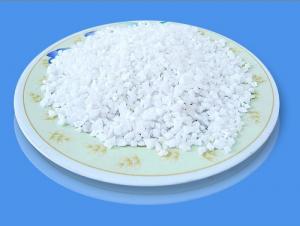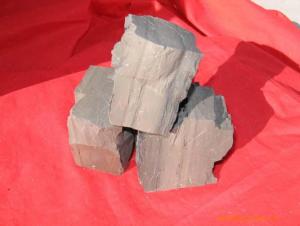Raw Materials for Refractory - Abrasive White Fused Alumina 60#-100#
- Loading Port:
- Tianjin
- Payment Terms:
- TT OR LC
- Min Order Qty:
- -
- Supply Capability:
- 1000MT m.t./month
OKorder Service Pledge
Quality Product, Order Online Tracking, Timely Delivery
OKorder Financial Service
Credit Rating, Credit Services, Credit Purchasing
You Might Also Like
Specification of Abrasive White Fused Alumina
Item | Chemical Composition | |||
Al2O3 min | NaO2 max | SiO2 max | Fe2O3 max | |
12#-60# | 99.15 | 0.26 | 0.08 | 0.05 |
60#-100# | 99.15 | 0.28 | 0.09 | 0.06 |
120#-150# | 99.1 | 0.29 | 0.10 | 0.08 |
180#-220# | 99.05 | 0.31 | 0.12 | 0.1 |
230#-800# | 98.5 | 0.5 | 0.15 | 0.1 |
1000#-1200# | 98.1 | 0.6% | 0.18 | 0.1 |
Packaging & Shipping
In 1MT jumbo bag or as the buyer request.
We ship the cargo in 20' GP containers,each container loads 25MT/20bags.
Application of white fused alumina
Made of abrasive, suitable for grinding hardened alloy steel, high speed steel. Fine-grained flour is also used for precision casting.
- Q: what is best for making refractory insulation for Blast furnace, hot stove.
- clay brick, insulating brick can endure relatively high temperature and last longer than the general fireproof fiber.
- Q: Who knows the setting requirements of roofing fire barrier zone?
- First, the the minimum of fire barrier width is greater than 30cm, and the thickness should be same to the thickness of the insulation materials. Fire barrier zone insulation board must do the whole area sticking construction with the base wall during the construction. Fire barrier zone insulation board is required to assistant binding by anchor bolt, anchor bolt must suppress the underlying mesh. Second, Fire barrier zone should be set at the upper position of door and window openings, the distance between the low edge of isolation belt and the upper edge of the window must be less than 50cm. The thermal resistance of fire barrier zone must be half than EIFS thermal resistance in the cold northern areas, while the thermal resistance of fire barrier zone must be three times than EIFS thermal resistance in the hot summer and cold winter area. Third, When the fire barrier zone is set on the edge of the window, fire barrier zone at the upper part of the window should do flanging when sticking, flanging glass fiber mesh must exceed 10CM than firebreak insulation board. Flanging network, underlying network and surface network can not be overlapped or butted at the top of the window. I hope you can be satisfied
- Q: Refractory net
- I think China's refractory industry does exist high yield and quality is not high.The main reason, I think, is the immaturity of the Chinese government and individuals. First of all, the government does not encourage basic research, resulting in the lack of innovation in the refractory industry; moreover, the company and enterprise take immediate interests as the most important and do not value long-term development; individual enterprises are eager for quick success and instant benefit. Users of domestic refractories, refractory products only to the price for the bid by standard of foreign products; regardless of price, quite a bit of the meaning of things.
- Q: How is grade of fire endurance divided?
- Does anyone know about grade of fire resistance? How is grade of fire endurance divided?
- Q: How is refractory material made?
- It is made from carbon materials.
- Q: What are the types of refractory sealant?
- Refractory sealant has low exothermicity and will form a hard corking content during burning, it includes: Liquid polysiloxane has at least two active groups selected from alkoxy, hydroxy and alkenyl; a cross-linking agent, a catalyst, a reinforcing filler and wollastonite. These cured silicone rubber sealant has low heat release and will form a hard coking content structure while buring. Refractory sealant composition can be used in sealing structure to prevent flames, air and other steams passing. 1. In a liquid organic polysiloxane polymeters, each R1 is independently selected from the alkyl, aryl, alkenyl and haloalky which has 1-18 carbon atoms, and each R2 is independently selected from the hydroxy, alkoxy, alkenyl, and X is an integer from about 10 to 1,500. 2. A crosslinking silicone compound having at least 3 silicon-bonded eactive groups. 3. A R2 pressed of silicon bonding capable of promoting component A. 4. Wollastonite and a selective reinforcing filler.
- Q: Who knows the new fireproof and thermal inuslation matertial?
- Ceramic foam insulation board, XTP vacuum insulation panels and a variety of composite insulation panels, etc. Relatively speaking, the inorganic insulation board is a trend. In terms of the overall performance, the cost performance of the foam insulation board is higher. XTP has the best performance, but with a little trouble in construction. Because of the vacuum characteristics, transportation and installation process should be very careful.
- Q: What are the best refractory materials in 2,400 Celsius degree?
- You can try zircon sand which has a melting point of 2430.
- Q: Who knows what kind of fire protection material is better?
- Characteristic of polyurethane rigid foam thermal insulation decorative composite board: (1) ultra high cost performance, increased property's selling point (high cost performance) new model of thermal insulation material, excellent thermal insulation properties, elegant decorative effect, 50 years of service life, reduce maintenance costs and social waste. (2) it overcomes defects of traditional insulation technology (to solve the freezing and thawing, veneer cracking and shedding) traditional benzene board, the phenomenon of freezing and thawing that is easily appear in plastic extruded sheet, paint finish is easy to crack; its veneer facing can easily fall off; thermal insulation materials and wall are poorly adhered, easy off the whole. There is a themal bridge in dry hanging wall. (the characteristics of polyurethane composite board)
- Q: Is there a worker in (Jigang refractory plant)?
- Ha ha, base should be rest, you won't give you money, Hugh or those money, endlessly is your dedication. Should be double cease, ah, how do you say four days?. In theory, it's five days off now, and the three day of that is from the chairman to every employee.
Send your message to us
Raw Materials for Refractory - Abrasive White Fused Alumina 60#-100#
- Loading Port:
- Tianjin
- Payment Terms:
- TT OR LC
- Min Order Qty:
- -
- Supply Capability:
- 1000MT m.t./month
OKorder Service Pledge
Quality Product, Order Online Tracking, Timely Delivery
OKorder Financial Service
Credit Rating, Credit Services, Credit Purchasing
Similar products
Hot products
Hot Searches
Related keywords
